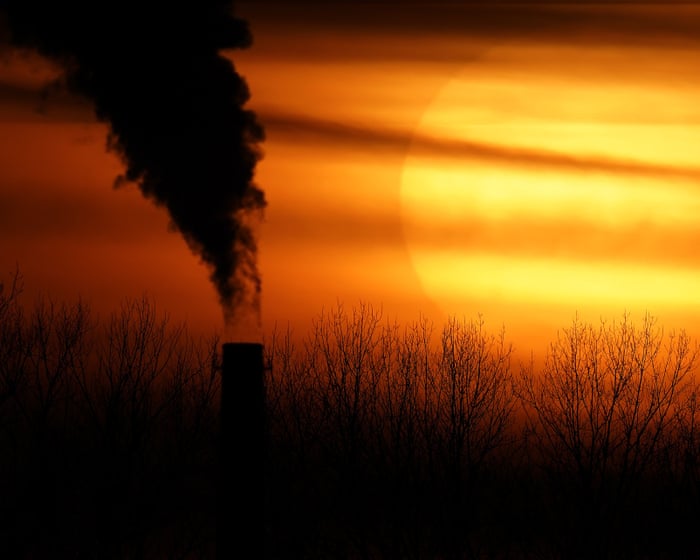According to UN data, carbon dioxide levels in the atmosphere reached a new high in 2024, rising by a record amount and worsening the climate crisis that is already costing lives and livelihoods worldwide.
Scientists are concerned that natural carbon “sinks”—such as forests and oceans that absorb CO2—are weakening due to global warming. This could create a vicious cycle, causing temperatures to rise even faster.
The World Meteorological Organization reported that the global average concentration of CO2 jumped by 3.5 parts per million to 424 ppm in 2024, the largest increase since modern record-keeping began in 1957.
Several factors contributed to this sharp rise. Despite a 2023 global pledge to move away from fossil fuels, their use continued unabated. Additionally, wildfires surged due to hotter, drier conditions caused by global heating, with emissions in the Americas reaching historic levels in 2024, the hottest year on record.
A third concern is the potential failure of Earth’s carbon sinks. Normally, about half of annual CO2 emissions are absorbed by oceans and plant life. However, warmer oceans are less able to dissolve CO2, and hotter, drier conditions and more wildfires are reducing plant growth.
Carbon sinks are known to be less effective during El Niño years like 2023 and 2024, when Pacific wind and current patterns lead to higher global temperatures. But human-caused warming has already raised average temperatures by about 1.3°C. Researchers noted an “unprecedented failure of the land sink” in 2023 and 2024, raising fears that these natural absorbers are weakening.
Dr. Oksana Tarasova, a senior scientific officer at the WMO, expressed concern that both land and ocean sinks may be losing their ability to remove CO2, which could accelerate global warming. She emphasized the need for continued greenhouse gas monitoring to understand these feedback loops.
The WMO also highlighted that rising CO2 emissions will affect the climate for centuries due to the gas’s long lifespan in the atmosphere.
Ko Barrett, WMO deputy secretary general, stated that the heat trapped by greenhouse gases is intensifying extreme weather. Reducing emissions is crucial not only for the climate but also for economic stability and community well-being.
In addition to CO2, atmospheric levels of methane and nitrous oxide—the second and third most significant human-related greenhouse gases—also hit record highs in 2024.
About 40% of methane emissions come from natural sources, but scientists worry that global warming could increase methane production in wetlands, creating another feedback loop. The remainder comes from fossil fuel extraction, livestock, landfill waste, and rice cultivation. Human-caused nitrous oxide emissions largely result from excessive fertilizer use in farming.The World Meteorological Organization (WMO) published its yearly greenhouse gas report a month ahead of the UN climate summit, Cop30, in Belém, Brazil. At the summit, global representatives will work to strengthen climate efforts. The findings are based on information gathered from 500 monitoring stations worldwide.
Frequently Asked Questions
Of course Here is a list of FAQs about the significant rise in CO2 levels and global warming designed to be clear helpful and accessible
BeginnerLevel Questions
1 What is CO2 and why is everyone talking about it
CO2 or carbon dioxide is a natural gas in our atmosphere However human activities like burning coal oil and gas have released massive amounts of it trapping extra heat and causing the planet to warm up
2 Whats the difference between global warming and climate change
Global warming refers specifically to the longterm rise in the planets average temperature Climate change includes warming but also refers to the broader sideeffects like more intense storms sealevel rise and shifts in weather patterns
3 How do we know CO2 levels are rising
Scientists have been directly measuring CO2 in the atmosphere for decades The most famous recording station Mauna Loa in Hawaii shows a steep and steady increase year after year We can also see it by analyzing ancient air bubbles trapped in ice cores
4 Isnt some warming natural Why is this different
Yes the Earths climate has changed naturally in the past The current warming is different because it is happening much faster than any natural cycle and it is overwhelmingly caused by human activities that release greenhouse gases
5 What are the main sources of this extra CO2
The primary sources are
Burning fossil fuels for electricity heat and transportation
Deforestation as trees that absorb CO2 are cut down
Industrial processes like making cement
Intermediate ImpactFocused Questions
6 What are the most immediate effects of this faster warming
We are already seeing effects like more frequent and severe heatwaves intense droughts in some regions heavier rainfall and flooding in others melting glaciers and ice sheets and rising sea levels
7 How does rising CO2 affect the oceans
The oceans absorb about a quarter of the CO2 we emit This makes the water more acidic a process called ocean acidification which harms marine life like corals and shellfish
8 What is a tipping point in climate change
A tipping point is a threshold where a small change can push a system into a new often irreversible state An example is the melting of




